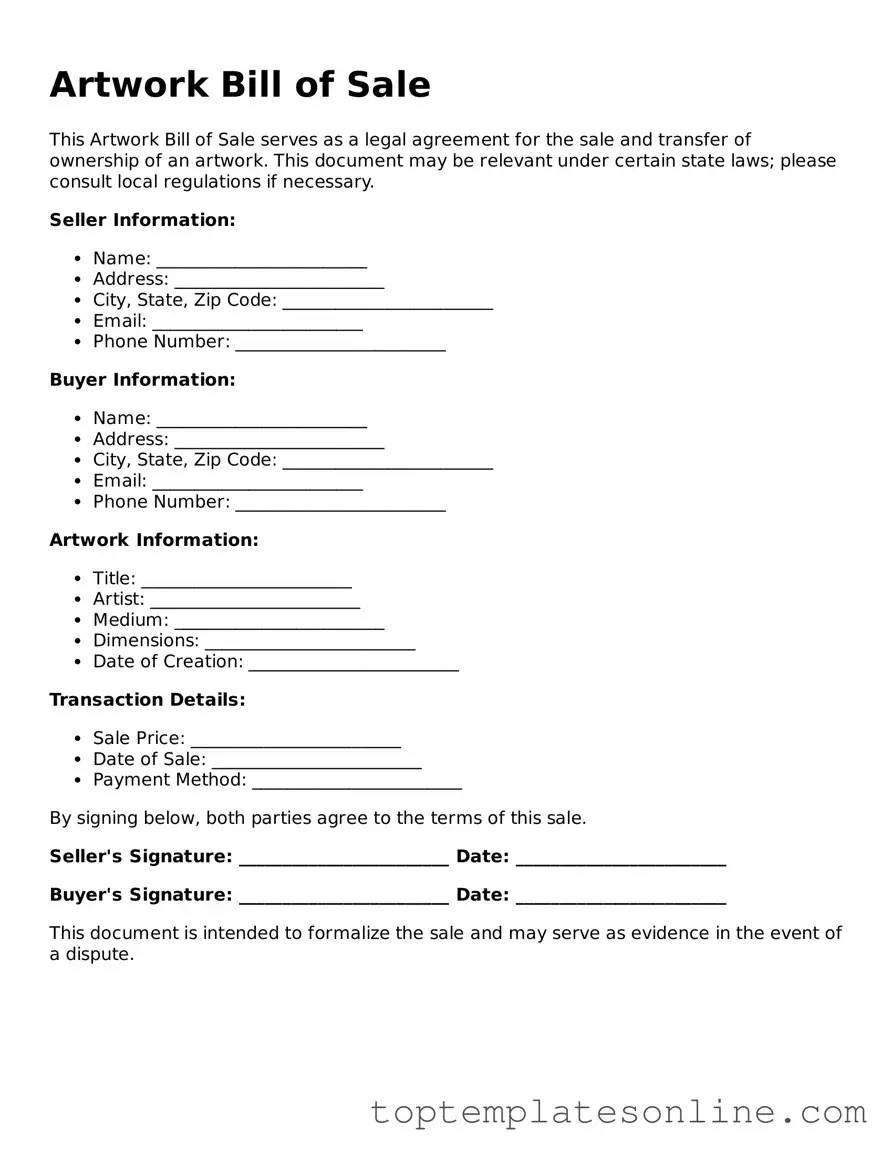Attorney-Approved Artwork Bill of Sale Form
The Artwork Bill of Sale form is a legal document that facilitates the transfer of ownership of artwork from one party to another. This form outlines key details such as the description of the artwork, the sale price, and the signatures of both the buyer and seller. Understanding this document is essential for both artists and collectors to ensure a smooth transaction.
Customize Artwork Bill of Sale Here
